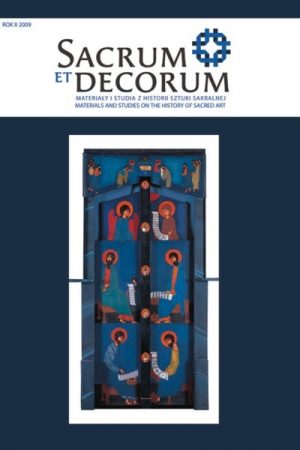Otto Piene, Bronze and Gold III, 1959
Keywords:
ANALYSIS OF A WORK OF ART, ART THEORY, FASCINOSUM, HERMENEUTICS, OTTO PIENE, TREMENDUMAbstract
The analysis of the abstract work by Otto Piene shows that the painting, which at first glance seems purely aesthetic, primarily intended to produce a sense of pleasure, can potentially speak to the most profound, existential (in the Jaspersian sense of the term) essence of man. The analysis discusses the visual qualities which, on the one hand, apply to the plane of the painting, and, on the other, to the viewer who assumes a vertical position in front of the painting. The description of these qualities, which come into being in the experience of art grounded not in the soul [Seele] rather than the psyche, employs the concepts of tremendum and fascinosum; these two categories allow the author to express the dual nature of the human experience of the sacred.Downloads
Downloads
Published
How to Cite
Issue
Section
License
Copyright (c) 2009 Sacrum et Decorum

This work is licensed under a Creative Commons Attribution-NonCommercial-NoDerivatives 4.0 International License.
In line with the Open Access policy, authors retain full copyright to their articles – without restrictions.
Authors can deposit their articles in a repository of their choice.


